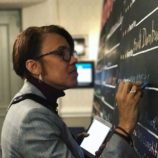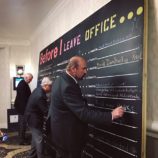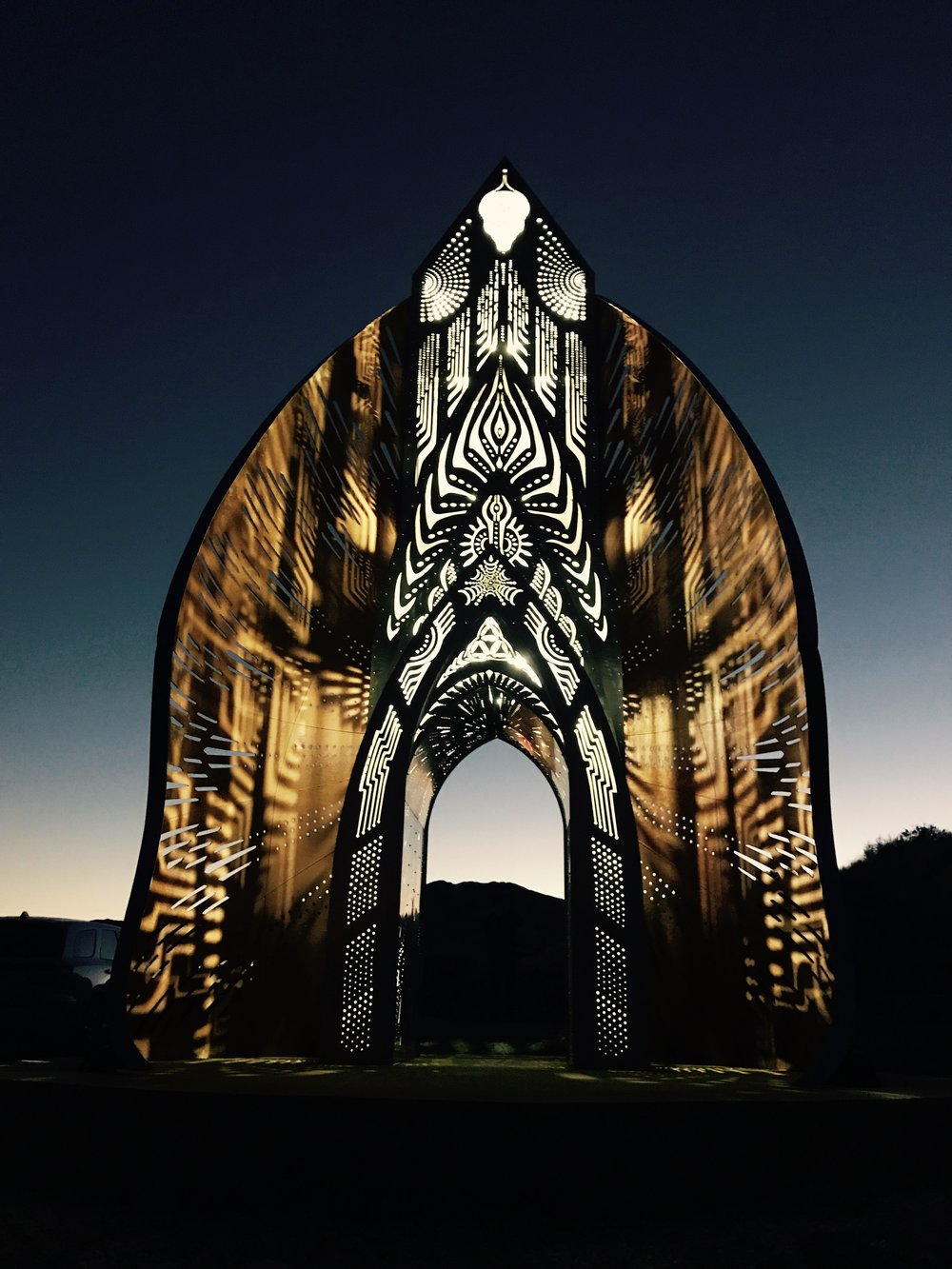When I left my gig in politics in 2011, I never would have guessed I’d be speaking at the U.S. Conference of Mayors seven years later. I definitely didn’t imagine I’d be there on behalf of Burning Man. Life is full of surprises.
At the gathering’s annual breakfast honoring leadership in the arts on January 26, I stood in front of roughly 500 mayors, art directors, and other arts advocates from across the U.S., sharing some of what Burning Man culture has to offer communities well beyond our home in Northern Nevada. The program included remarks from Second Lady Karen Pence, Minority Leader Nancy Pelosi, Actor Michael Cerveris, and several Mayors who were recognized for their leadership in the arts.
The U.S. Conference of Mayors is the non-partisan membership organization of Mayors from U.S. cities with a population of 30,000 or more (there are roughly 1,400 of these). The group meets twice a year: each January in Washington, D.C. and each June in a different city in the U.S. The Conference passes resolutions on matters of national urban policy, which are shared with the President and Congress. It represents the voice of local leadership from across the country.
So what was Burning Man doing there?
Reno Mayor Hillary Schieve, a proud Burner and Reno native, asked us to participate. As the recently named chair of the Tourism, Arts, Parks, Entertainment and Sports Committee of the U.S. Conference of Mayors, Mayor Schieve helps shape the agenda for the group, and has the honor of hosting the annual Leadership in the Arts Breakfast that takes place on Friday of the Conference’s Winter Meeting in Washington, D.C. Mayor Schieve asked us to bring a bit of the Burning Man spirit to the nation’s mayors, to help them recognize the positive impact of Burning Man (and arts and culture more broadly) on Reno and beyond.
Mayor Schieve’s enthusiasm for who we are and what we do is palpable. In my first meeting with her, I was struck by her account of Black Rock City. “It was like a whole world existed that I didn’t even know was possible,” she beamed. She emphasized how important it is for people to feel empowered — to have that very Burning Man experience of looking around and realizing, We made this! We did this! We can do anything!
She’s also keenly aware of the cultural and economic benefits Burning Man brings to her great city. From large-scale installations along the Truckee River and the Playa Art Park downtown, to large Burner/Maker spaces like the Generator and Artech, and the recent exhibition at the Nevada Museum of Art, Burning Man and Reno have found a symbiotic relationship that works to honor artists, celebrate Burning Man’s ethos, and stimulate the local economy.
We were thrilled to receive the invitation from Mayor Schieve. Eight Burning Man Project representatives traveled to Washington to participate: Marnee Benson, Stuart Mangrum, Christopher Breedlove, Jenn Sander, Zac Cirivello, Maria Partridge, co-founder Crimson Rose and myself.

Learning With the Mayors
After the breakfast, we hosted a breakout session for those who wanted to hear more. Burning Man Project Director of Education Stuart Mangrum gave a stellar presentation about Black Rock City operations, what we’ve learned about urban design over the years, and how we’ve collaborated with cities to bring large-scale collaborative art and the 10 Principles out of the desert and into communities. BMP Arts Advocate Maria Partridge followed up with a deep dive into the impact of Burning Man on Reno, highlighting some of the exciting new projects there, including Kate Raudenbush’s sculpture, Transition Portal, which was commissioned by the Nevada Department of Transportation and is installed at the Tahoe-Reno Industrial Center.
In true Burning Man fashion, we didn’t just bring presentations for the Mayors. We also brought art. Huge thanks to LA-based artist Scott Froschauer for bringing and installing his piece, The Sign of the Times, which was on playa in 2017 and will be included in the upcoming exhibition No Spectators: The Art of Burning Man, which opens at the Renwick Gallery of the Smithsonian American Art Museum on March 30. The piece features the 10 Principles as street signs and proved to be an effective conversation starter about Burning Man’s values.
Aaron Mowgli Parness, in a matter of hours, built a Before I Leave Office wall in the spirit of Candy Chang’s “Before I Die” piece that has become a global participatory art phenomenon. I particularly enjoyed watching mayors tentatively eye the piece, start to warm up to the idea, then pick up the chalk and write in their intentions. Fund more public art. Build a youth center. Create an innovation district. Improve access to public transportation. Empower more women.


(Photos by Zac Cirivello)
I was particularly moved witnessing Mayor Karen Weaver of Flint, Michigan write “I want to create access to clean, affordable drinking water.”
And of course we were pleased to see “Go to Burning Man!”
Mayors Today, Burners Tomorrow?
So what can mayors learn from our D.I.Y. city in the desert?
We’ve found that when people build their own city, they are deeply invested in what happens there. They take care of it, and of each other. Our city design is a reflection of what we value: self-expression, inclusion, and collaboration, and its residents are engaging in all kinds of ways to make the world more like the one they want to live in.
From large-scale public art projects, solar installations, and beach clean-ups, to parklets and disaster relief efforts, Burners are rolling up their sleeves and remaking their hometowns into more vibrant, inclusive, and resilient communities. This is what we shared with the mayors of America: Our job as leaders is to build a platform, to extend an invitation — to create conditions that encourage experimentation, citizen-driven solutions, and high levels of participation.

The response was overwhelmingly positive. Conference of Mayors participants were open-minded and asked interesting questions. People thanked us for being there. They said it was important, that everybody needs to think big about how to address the challenges we face, and that this is just the kind of thing groups like the Conference of Mayors need to inspire more creative thinking. Mayor Schieve said she wanted to shake things up, and she did!
As it turns out, Mayors weren’t the only ones talking about Burning Man in Washington that week. While in town, we stumbled upon this event hosted by the Cato Institute (yes, that Cato Institute). The dialogue was thoughtful and engaging, and for me it reinforced one of the most important things about Burning Man: its meaning and power transcend political divisions.
We also had a chance to join the weekly Burner Meetup at D.C. bar, Local 16. Despite the fact that much of the D.C. crew was in Florida for The Love Burn, we still had a chance to connect with folks from Catharsis, Nation of Makers, and the Congressional Maker Caucus.
I wasn’t sure what being in D.C. would feel like during these tense political times, but I’m so grateful I got to spend time with local elected officials from across the country, and across party lines. No matter what our political affiliation or ideology, I believe we all stand to benefit from creative expression, inclusion, and innovation. I came away feeling energized to keep making the kind of change I’d like to see in this country. Lately, political attention has been fixated on the national level, but clearly cities are where the action is. I look forward to a day when every city can call Black Rock City its sister city.
Top photo: Michael Cerveris, Robert Lynch, Mayor Mike Rawlings, Mayor Mitch Landrieu, Tom Cochran, Congresswoman Nancy Pelosi, Mayor Javier Gonzalez, Mayor Hillary Schieve, Mayor Stephen Benjamin, Megan Miller, Mayor Bryan K. Barnett, Mayor Elizabeth B. Kautz, photo by David Hathcox, USCM